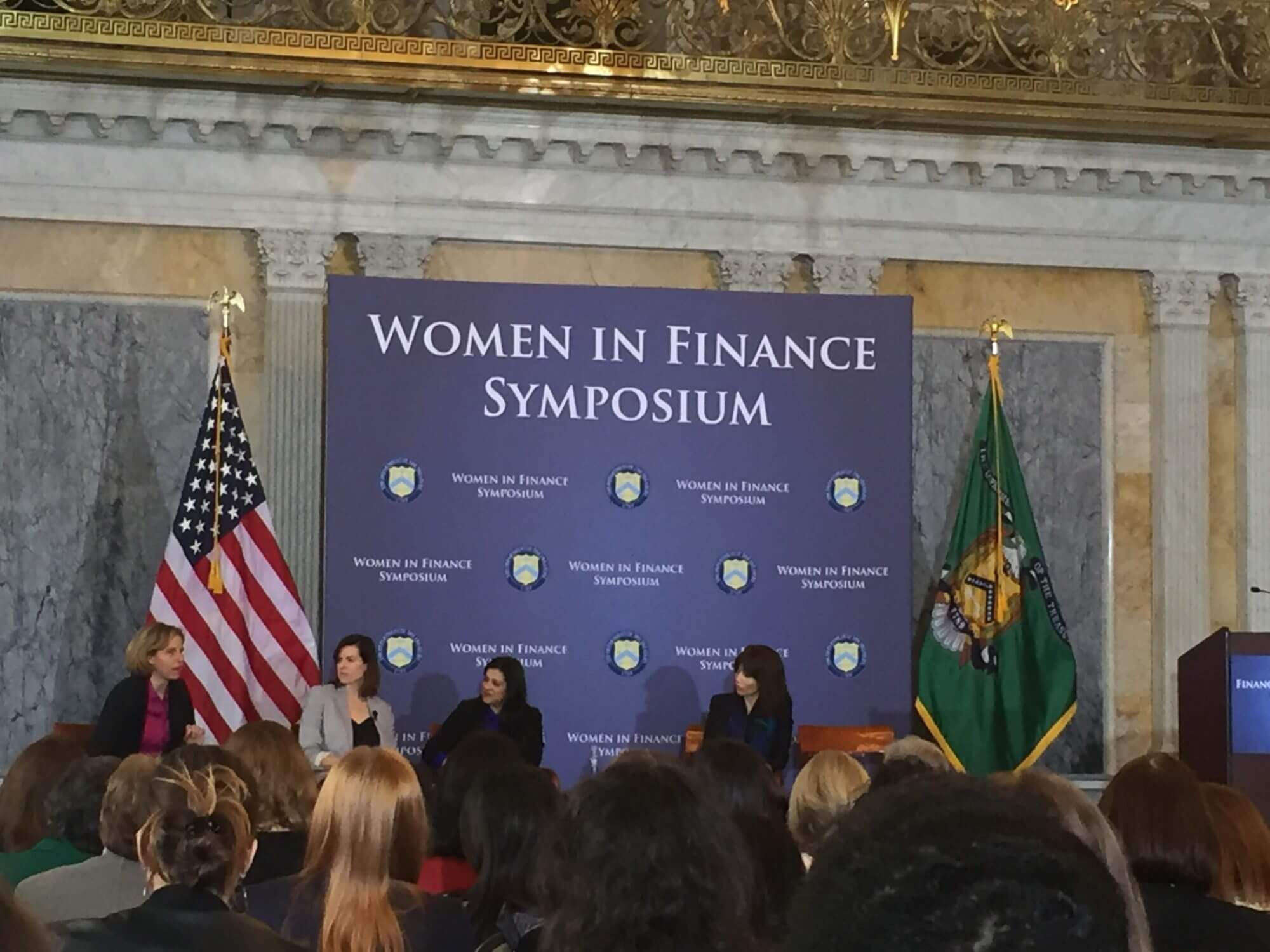WASHINGTON—When some of the nation’s most powerful women got together Thursday at the Treasury Department, they meant business.
The Women in Finance and Technology Symposium addressed improving financial inclusion for women, closing the gender gap in science and technology fields, women’s role in innovating in the cyber sector and investing in women in the workforce.
“It’s clear when women succeed, we all succeed,” said Treasury Secretary Jacob Lew. “We can make real progress working together.”
The symposium, sponsored by the Department of the Treasury and the White House Council on Women and Girls, had many firsts – the first use of “technology” in the event title and, more important, the first time gender disparities were highlighted. It was also the first time that the advancement of women in science, technology, engineering and mathematics fields was addressed.
“This is really exciting for a couple of reasons,” said U.S. Treasurer Rosie Rios. “Historically the Women in Finance symposium has never talked about gender issues.”
Today, there are 7 million highly skilled women who are not in the general workforce, compared with 2 million highly skilled men, according to Vivian Riefberg, senior partner of McKinsey and Company, a management consulting firm.
“Closing the gender gap is an economic value across the world,” said Riefberg. “There’s a huge opportunity right here at home and every state has the opportunity to gain. Without action we won’t live long enough to see equality.”
According to Riefberg, companies that have been successful in bringing women into the workforce have some key traits: demonstrating diversity is a top priority, tracking key metrics and drive accountability, rethinking work and work-life balance, identifying and interrupting gender bias and leveling the playing field.
Women also face disadvantages when it comes to specific areas of the workforce.
If women were accurately represented in the computer science industry, there would 1.8 million more computer scientists in the U.S., according to Change the Equation.
Only 23 percent of high school girls say they are interested in pursuing a major in computer science during college, and less than half a percent of freshman female college students list a STEM field as an intended major, according to statistics from the National Science Foundation.
The STEM gender gap comes from implicit and unconscious biases, subtle messaging in schools, not enough female STEM role models and a lack of support and encouragement from parents at home, according to Melissa Moritz, deputy director of STEM for the Department of Education.
“How do we create the next generation of women in STEM?” asked Maggie Johnson, director of education and university relations for Google. “You have to start in elementary school, or maybe even earlier. There’s a gender differentiation that happens in middle school, but if you plant the seed early on some really good things can happen.”
In order to make STEM more appealing to girls, math and science curricula should be framed as “problem-based learning”– interactive lessons based around solving a question—Moritz said.
“We need to figure out better ways to support our educators and share the research as we learn about it in terms of effective ways to engage women or girls in STEM in classrooms,” she said.


